We grow you more
Drip and sprinkler irrigation for intensive agriculture
Drip and sprinkler irrigation for intensive agriculture
Walnut (lat. Júglan régia) is a species of trees of the genus Walnut of the Walnut family (Juglandaceae). Walnut trees growing in favorable soil and climatic conditions are very durable. Only grafted planting material of zoned varieties on a walnut rootstock are used for planting. The world demand for walnuts has never been fully supplied. According to various experts, the demand for walnuts is increasing every year. This is due to the biological properties of the walnut and the limited climate zones in which this species can grow. According to various estimates, only 4 to 7% of the world's land is suitable for growing walnuts.
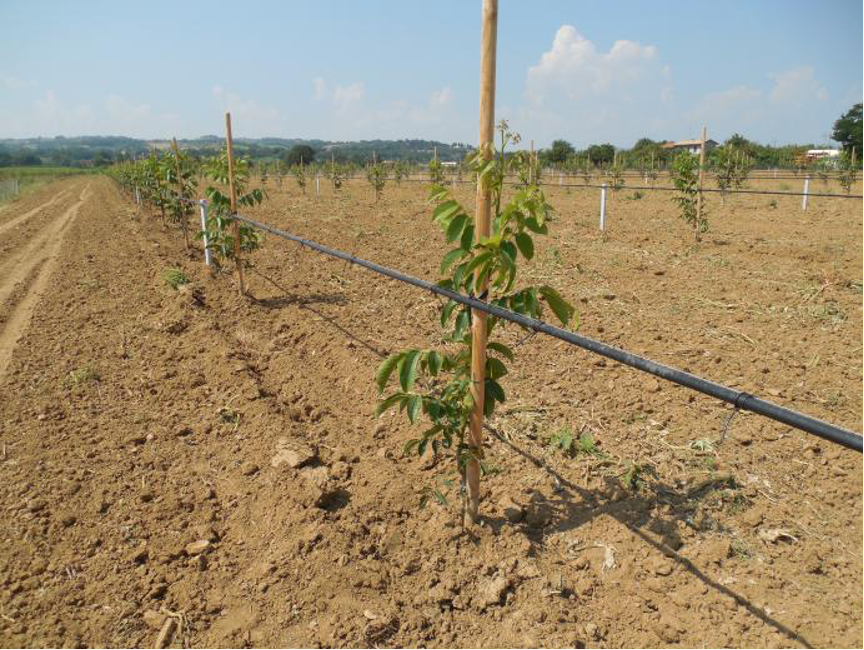

Large hazel, or “Lombard nut” (lat. Corylusmaxima) is a species of deciduous woody shrubs of the genus Hazel (Corylus) of the Birch family (Betulaceae), the fruits of which are known as hazelnuts.
Currently, the production of hazelnuts is widespread in many countries of the world, but its production is most developed in Turkey, USA, Italy, Spain, the Balkans, the Caucasus, some countries in Asia and a number of European countries.
Hazelnut gardens are planted on flat areas or slopes of various exposures. Hazelnut grows well and bears fruit on sufficiently fertile and moisture-rich soils, as well as on sandy and carbonate soils. Waterlogged and swampy areas with a close occurrence of groundwater are unsuitable for hazelnuts. The scheme of planting a hazelnut garden depends on the soil and climatic conditions of the area of cultivation. The most common planting schemes are: 7×5 m, 8×6 m, 6×6 m, 7×7 m. When choosing a planting scheme, the possibility of caring for plantings using machines and mechanisms, the condition of the soil, and the presence of water are taken into account.
Domestic, or cultivated apple tree (Malus domestica), which includes most of the varieties cultivated in the world (the number of which exceeds 10 thousand).
The apple tree is the most common fruit crop in the temperate climate zone. Due to its ecological plasticity, it is grown in many parts of the world. This crop is grown in an annually increasing volume of production. The apple tree is a very frost-resistant crop, so it is grown in different climatic zones.
Depending on the variety, rootstock and growing method, the apple tree begins to bear fruit from the 1st or 3rd year. Intensive orchards are laid mainly on the dwarf rootstock M.9, which allows the use of a planting pattern of 4 x 1 m, 3.5 - 1 m, etc. This planting scheme allows you to get a crop of at least 30 t/ha and more.

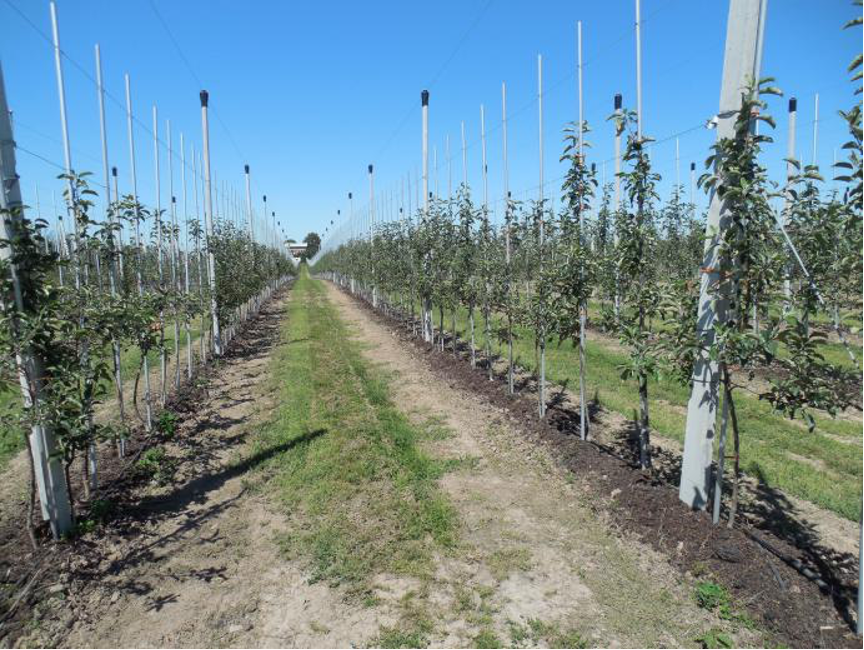
Pear (lat. Pýrus) is a genus of fruit and ornamental trees and shrubs of the Rosaceae family.
The pear is the second most common fruit crop in the temperate climate zone. The fruits of the pear are valued for their dessert taste and, like the apple tree, are widely used in the food processing industry.
Unlike the apple tree, the pear assortment is represented by four main varieties that are used in horticulture. The largest number of varieties is represented by the house pear.
In general, the pear is less hardy than the apple tree. Modern varieties are conditionally divided into two main groups:
- varieties of southern origin, with resistance up to -24С;
- frost-resistant varieties that can withstand up to -30C.
Sweet cherry (Cerasus avium Moenh) is a fruit crop of the cherry genus. In the wild, it is found in Central and Southern Europe, in Ukraine, in Moldova, in the Caucasus. Cultivated in European countries, China, Turkey, Japan. The cultural form of sweet cherry is a tree up to 10-12 m high with a pronounced trunk and a tiered arrangement of branches.
As a stock in the southern regions, wild cherries are used, in more northern regions, Magaleb cherries are used. Cherry trees begin to bear fruit in the 3-4th year. For good pollination and fruit set, several varieties are planted on the same site.

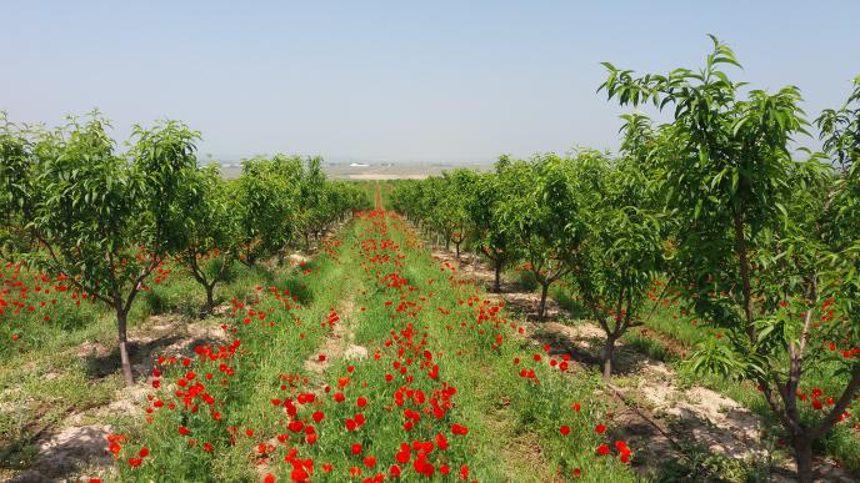
Peach, peach tree (lat. Persica) is a woody plant of the Rosaceae family, a relative of the almond tree. Common peach (Persica vulgaris) is a tree, up to 8 m high, with pink flowers that appear before the leaves.
Peach is a thermophilic tree. Most varieties do not tolerate temperatures below -25°C. Trees reach a height of up to 4 m, with a crown of up to 6 m in diameter. Peach blossoms in mid or late April, within 10-12 days.
A peach tree will usually bear fruit 2-4 years after planting, for a duration of 10-15 years, depending on the variety.
Peaches can be planted both in early spring and early autumn.
Swampy, damp areas, as well as places located in lowlands, are unsuitable for peach. Depending on the fertility of the soil, mineral and organic fertilizers must be applied during planting.
The peach is resistant to drought, but the lack of water affects its development and fruiting. It is best to use a drip irrigation system for watering. On average, a fruitful peach orchard requires between 3 mm to 4.5 mm of water per irrigation. Fertilizers are applied along with irrigation by fertigation. Calculation of fertilizers is carried out after receiving the analysis of soil and water.
Garden tall blueberry - Vaccinium corymbosum.
Native to North America. It is bred on industrial plantations. In the northern states of the United States and Canada, blueberries are more popular than blackcurrants. American blueberries are called tall because they grow up to two meters. The plant blooms in the third year after planting.
Blueberries grow best in open, well-lit areas.
The soil for blueberries should be ventilated, acidic, loose, peaty-sandy. The optimal level of standing groundwater is 40-60 cm from the surface. Under the condition of gradual and frequent watering, much higher depth of groundwater can be acceptable. The main thing, however, is the presence of acidic soil (pH in the range of 3.8–5). To accurately determine the level of acidity, it is better to use a special device - a pH meter, or, if possible, conduct a laboratory study of the soil. Even at a pH of around 6, blueberries grow slowly and often lag behind.
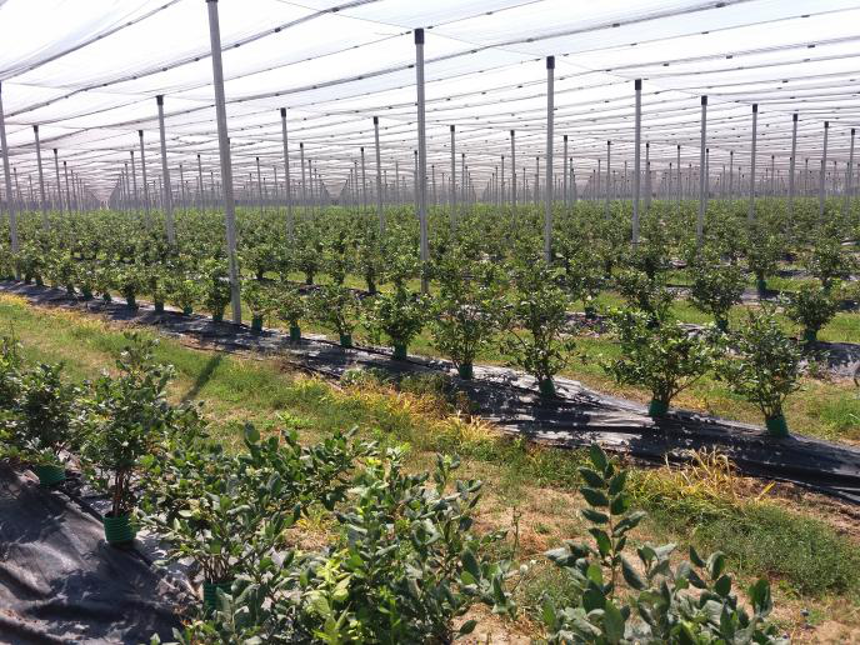
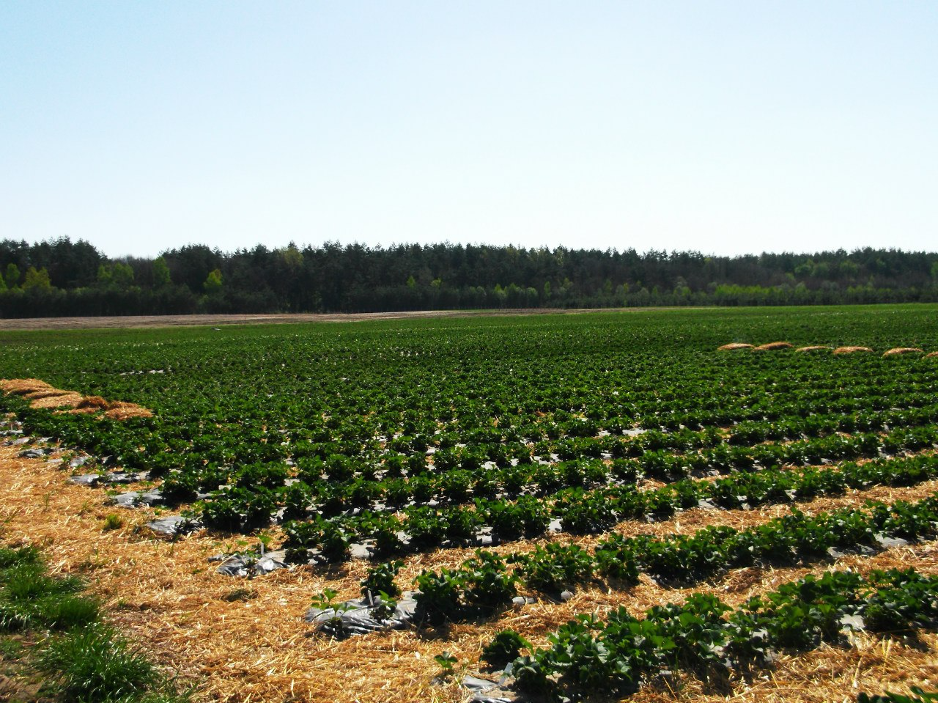
Strawberry is a perennial herbaceous plant. The aerial part is formed by stems, leaves, creeping shoots (whiskers), fruit formations. The root part consists of roots and rhizomes.
Strawberries grow well and bear fruit on black soils, gray forest, soddy-podzolic soils of medium density.
Most often, soils are chosen for having a light loamy and sandy loamy texture, providing good aeration of the root system and sufficient water-holding capacity. It is important to avoid heavy clay soils - in conditions of high humidity and poor air access, plants are more susceptible to diseases of the root system.
Strawberry plants grow better and bear fruit in a slightly acidic soil solution (pH in the range of 5.8-6.2).
By the nature of growth and fruiting, raspberries belong to the bush berries. The aerial part of the raspberry is a semi-bush, which is formed from the buds that formed on the rhizome and roots.
Raspberries do not tolerate salinity. The optimum soil pH for raspberries is 5.0-6.0. Suitable soils for growing raspberries are all types of light and medium texture (sandy, light and medium loamy). It is impossible to plant raspberry plantations on waterlogged, saline, carbonate and sandy soils. The depth of groundwater should not exceed 1-1.5m.
The requirements for the temperature regime depend on the varietal characteristics and the level of cultivation technology.

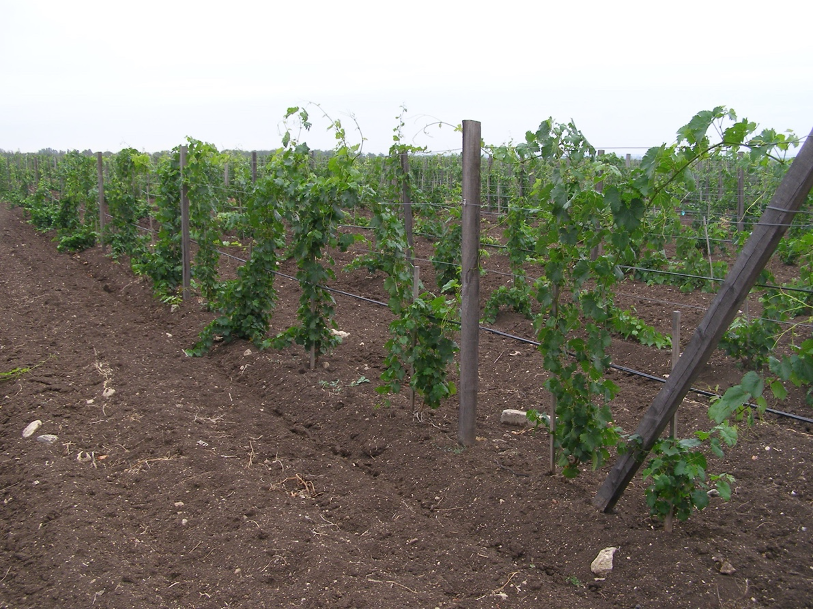
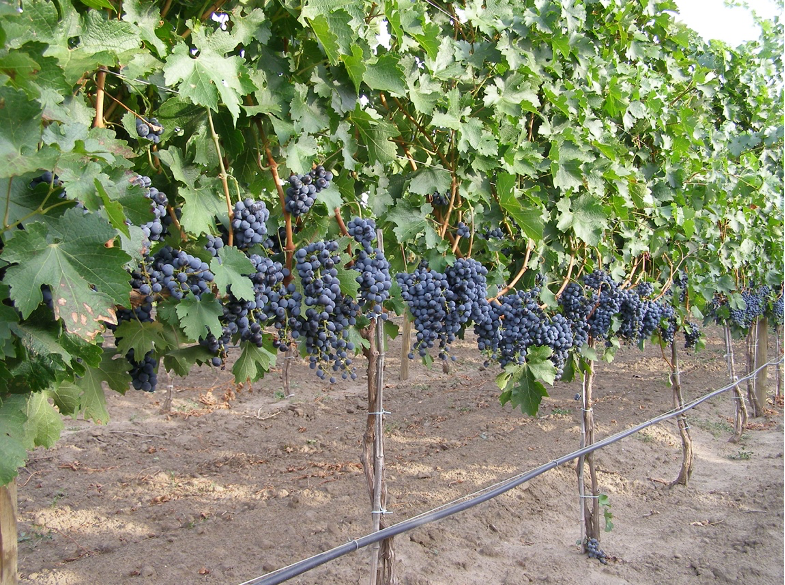
Grapes (lat. Vitis) is a genus of plants in the grape family.
Grapes are grown in almost all corners of the globe. The main area of industrial plantations of grapes (more than 80%) is concentrated in the Northern Hemisphere. Spain, Italy, France, Turkey have the largest areas. According to available data, there are about 8 million hectares of vineyards in the world, more than half of which grow in Europe.
In recent decades, the geography of industrial viticulture has expanded significantly. China, Chile, South Africa, and Australia are in serious competition with the leading European viticulture and wine-making countries.
In general, more than 80% of the world's grape harvest is used for winemaking, about 15% is consumed fresh, and only 5% is used for the production of raisins and other products.
Unlike many cultivated plants, grapes are more durable.
The vine grows both on the plains and on the slopes, often on lands unsuitable for the cultivation of other crops.
The most favorable climate for grapes is the moderately warm and subtropical. To start the growing season of grapes (depending on the variety), an average daily air temperature of + 6 ... + 12 ℃ is sufficient. Intensive growth of shoots, optimal conditions for flowering, laying and differentiation of reproductive organs occur at a temperature of +25…+30℃. European varieties generally tolerate winter frosts down to -15℃. In some areas with very frosty winters, grape bushes of low frost-resistant varieties are covered for the winter.